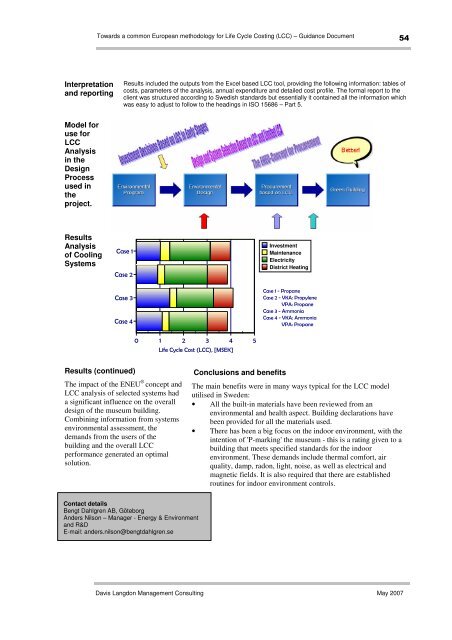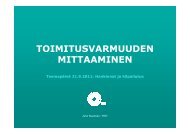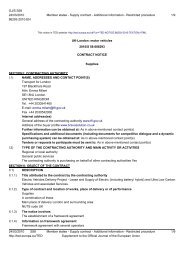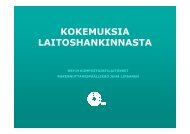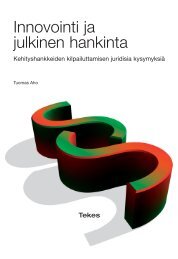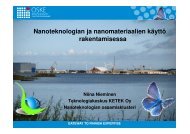Life cycle costing (LCC) as a contribution to sustainable construction ...
Life cycle costing (LCC) as a contribution to sustainable construction ...
Life cycle costing (LCC) as a contribution to sustainable construction ...
Create successful ePaper yourself
Turn your PDF publications into a flip-book with our unique Google optimized e-Paper software.
Towards a common European methodology for <strong>Life</strong> Cycle Costing (<strong>LCC</strong>) – Guidance Document<br />
54<br />
Interpretation<br />
and reporting<br />
Results included the outputs from the Excel b<strong>as</strong>ed <strong>LCC</strong> <strong>to</strong>ol, providing the following information: tables of<br />
costs, parameters of the analysis, annual expenditure and detailed cost profile. The formal report <strong>to</strong> the<br />
client w<strong>as</strong> structured according <strong>to</strong> Swedish standards but essentially it contained all the information which<br />
w<strong>as</strong> e<strong>as</strong>y <strong>to</strong> adjust <strong>to</strong> follow <strong>to</strong> the headings in ISO 15686 – Part 5.<br />
Model for<br />
use for<br />
<strong>LCC</strong><br />
Analysis<br />
in the<br />
Design<br />
Process<br />
used in<br />
the<br />
project.<br />
Results<br />
Analysis<br />
of Cooling<br />
Systems<br />
C<strong>as</strong>e 1<br />
C<strong>as</strong>e 2<br />
Investment<br />
Maintenance<br />
Electricity<br />
District Heating<br />
C<strong>as</strong>e 3<br />
C<strong>as</strong>e 4<br />
C<strong>as</strong>e 1 - Propane<br />
C<strong>as</strong>e 2 - VKA: Propylene<br />
VPA: Propane<br />
C<strong>as</strong>e 3 - Ammonia<br />
C<strong>as</strong>e 4 - VKA: Ammonia<br />
VPA: Propane<br />
0 1 2 3 4 5<br />
<strong>Life</strong> Cycle Cost (<strong>LCC</strong>), [MSEK]<br />
Results (continued)<br />
The impact of the ENEU ® concept and<br />
<strong>LCC</strong> analysis of selected systems had<br />
a significant influence on the overall<br />
design of the museum building.<br />
Combining information from systems<br />
environmental <strong>as</strong>sessment, the<br />
demands from the users of the<br />
building and the overall <strong>LCC</strong><br />
performance generated an optimal<br />
solution.<br />
Conclusions and benefits<br />
The main benefits were in many ways typical for the <strong>LCC</strong> model<br />
utilised in Sweden:<br />
• All the built-in materials have been reviewed from an<br />
environmental and health <strong>as</strong>pect. Building declarations have<br />
been provided for all the materials used.<br />
• There h<strong>as</strong> been a big focus on the indoor environment, with the<br />
intention of 'P-marking' the museum - this is a rating given <strong>to</strong> a<br />
building that meets specified standards for the indoor<br />
environment. These demands include thermal comfort, air<br />
quality, damp, radon, light, noise, <strong>as</strong> well <strong>as</strong> electrical and<br />
magnetic fields. It is also required that there are established<br />
routines for indoor environment controls.<br />
Contact details<br />
Bengt Dahlgren AB, Göteborg<br />
Anders Nilson – Manager - Energy & Environment<br />
and R&D<br />
E-mail: anders.nilson@bengtdahlgren.se<br />
Davis Langdon Management Consulting May 2007


